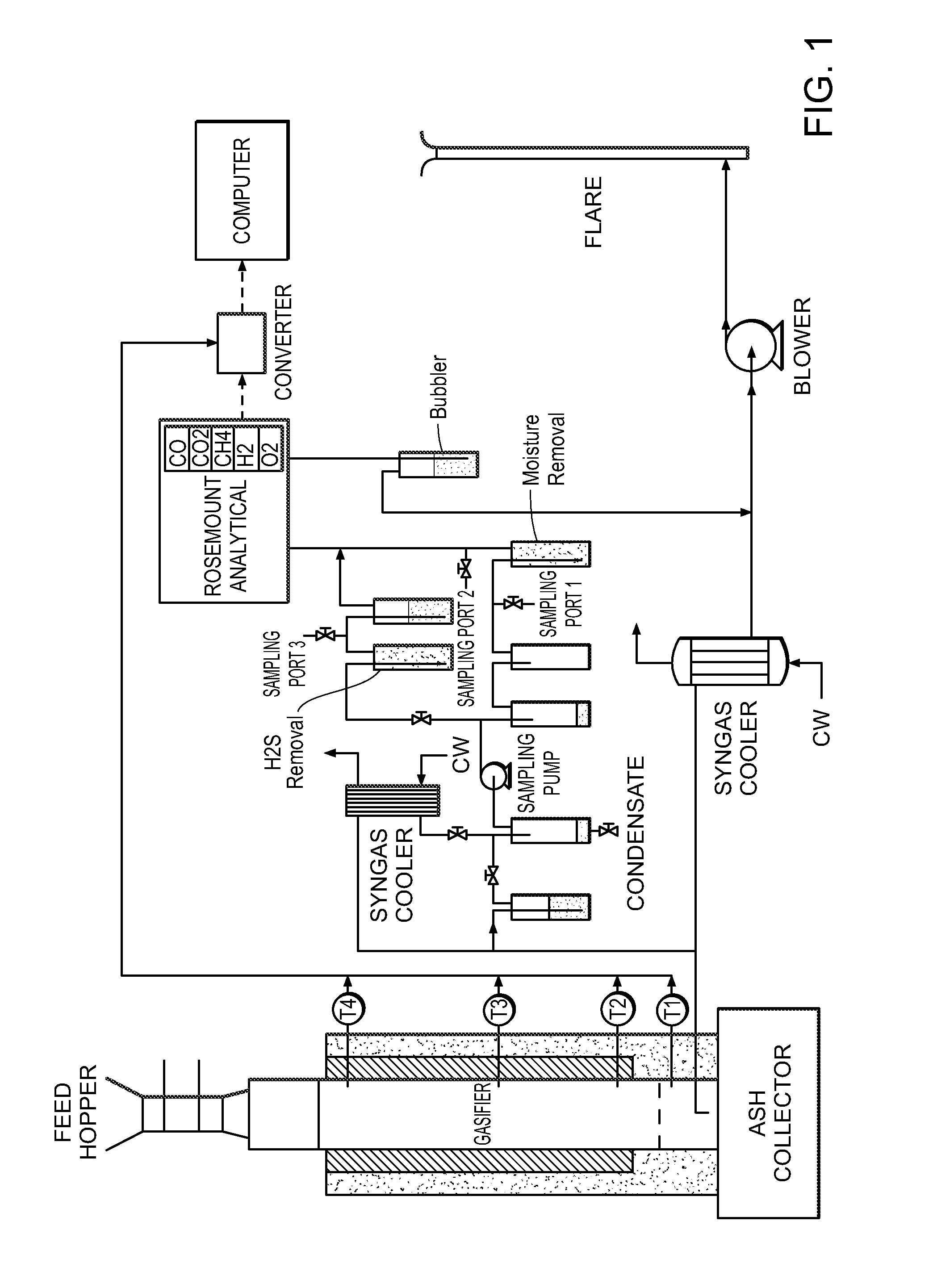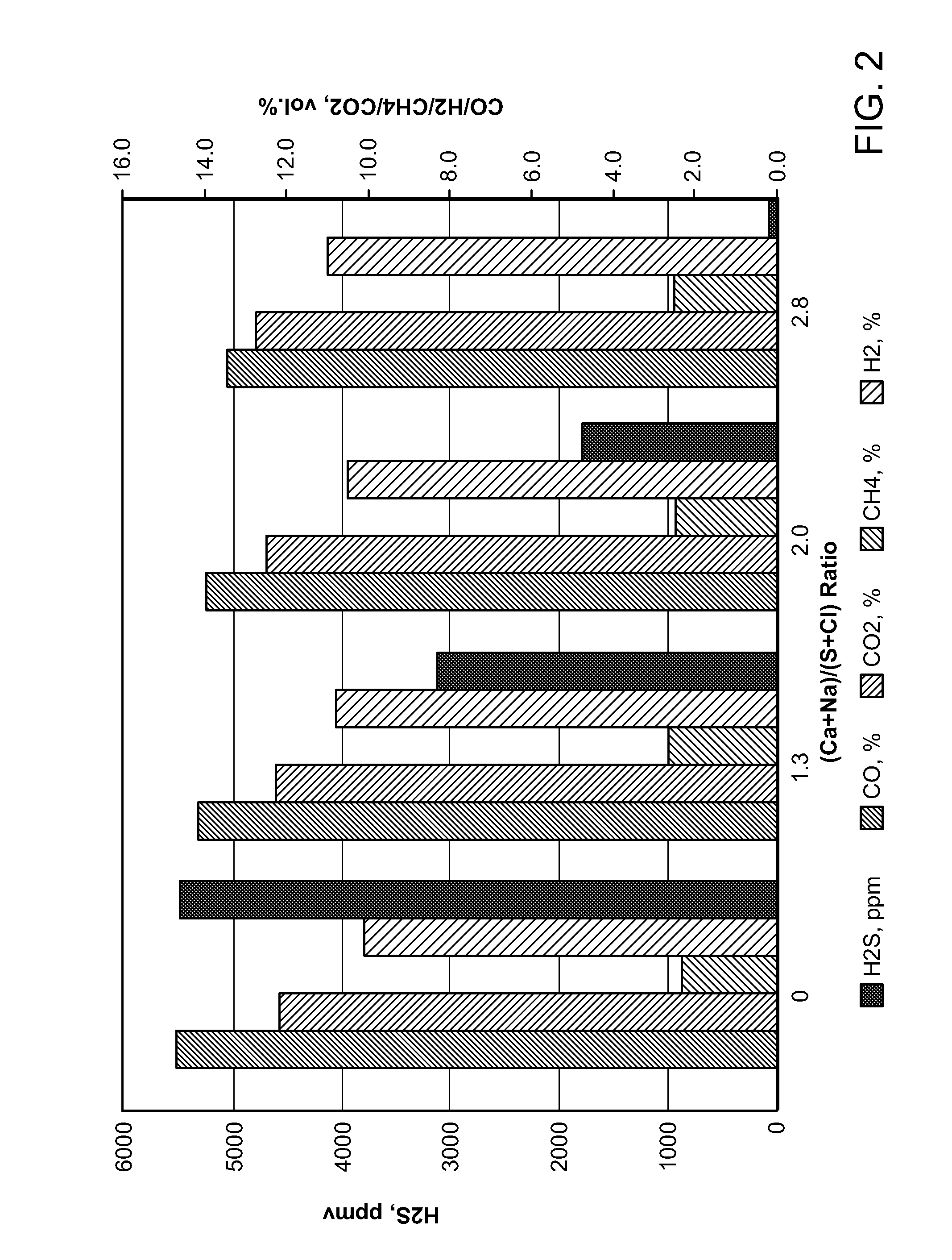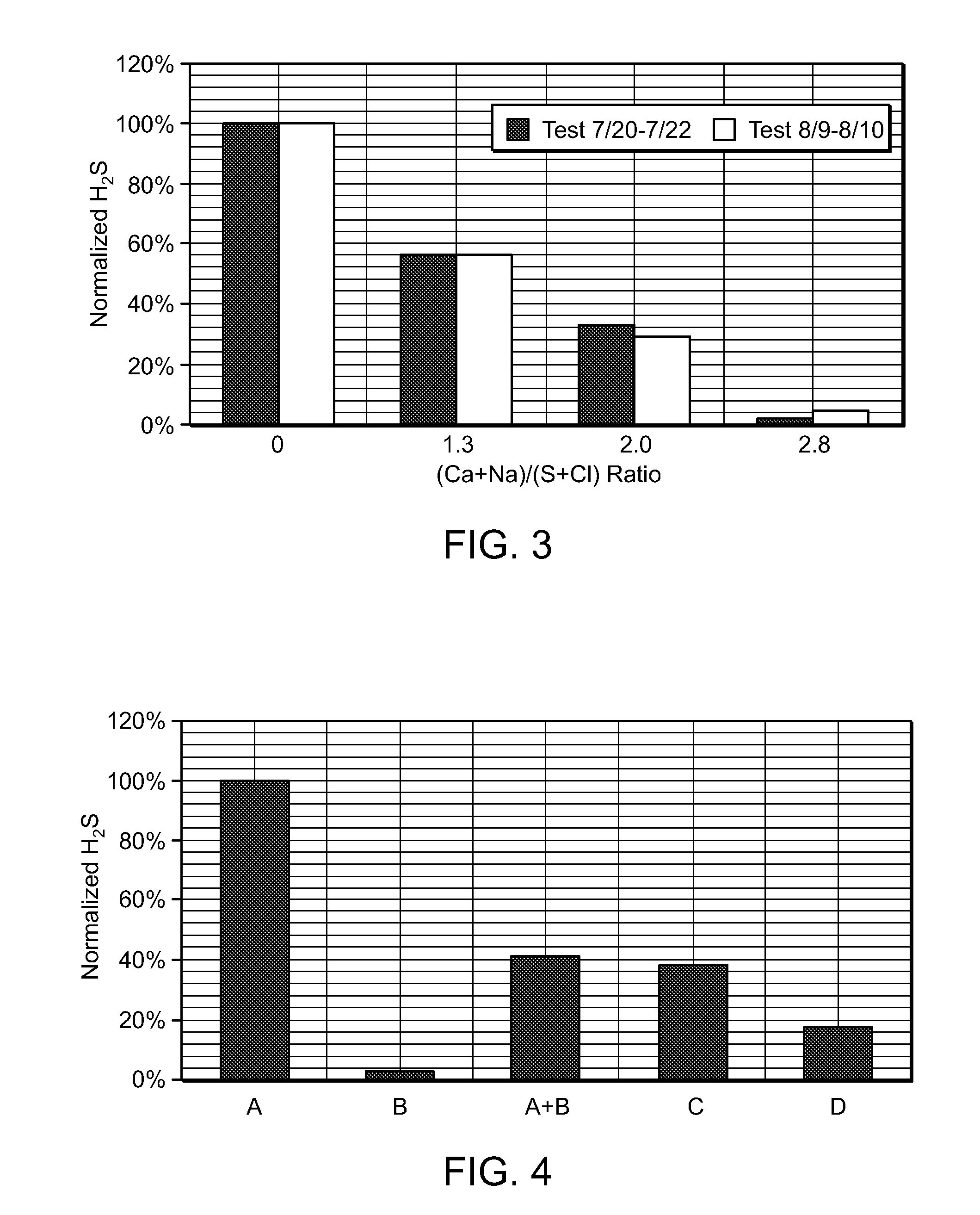Sorbent containing engineered fuel feed stock
a technology of engineered fuel and feed stock, which is applied in the direction of combustion types, lighting and heating apparatuses, and immunologic disorders, etc., can solve the problems of increasing the cost of transportation, increasing the amount of pollutants generated in the gas produced, and the scarce and expensive sources of fossil fuels useful for heating, etc., to reduce corrosion, mitigate corrosion, and reduce the effect of corrosion
- Summary
- Abstract
- Description
- Claims
- Application Information
AI Technical Summary
Benefits of technology
Problems solved by technology
Method used
Image
Examples
examples
[0193]Reference will now be made to specific examples some of which illustrate the invention. It is to be understood that the examples are provided to illustrate preferred embodiments and that no limitation to the scope of the invention is intended thereby.
General Procedures
[0194]The feed stock used in these tests below was made from MSW components, including paper, cardboard, magazines, and plastics, using procedures described in U.S. patent application Ser. No. 12 / 492,096. A full characterization of the prepared feed stock is provided below:
TABLE 1Analysis of the baseline feed stock (wt. %, as received basis)Moisture4.63Volatile matter73.14Fixed carbon16.56Ash5.67Carbon57.76Hydrogen7.34Nitrogen0.14Oxygen18.93Sulfur3.5Chlorine2.03
This feed stock is referred to as baseline feed stock, and it has no pollutant control sorbents added. In the experiments below, varying amount of sorbent are added in order to control pollutant emissions.
[0195]Since under gasification (or reducing) condit...
example 2
[0202]A second series of experiments was carried out with the same feed stocks as in Example 1. The results from Example 1 are compared with those of Example 2, and summarized in FIG. 3. FIG. 3 demonstrates that in both examples increasing the molar amount of sorbent in the feed stock reduces the amount of H2S in the syngas. Based on the experimental results, sorbent integrated with the engineered feed stock can drastically reduce sulfur emissions from the gasification process.
example 3
[0203]In addition to analyzing the syngas for hydrogen sulfide in the previous examples, the gas was also measured for HCL. It was found that there was no detectable HCl present in the syngas produced. Furthermore, the condensate collected from the gas-liquid separator, which is produced by the syngas sample cooler, was measured with a pH meter and total Chlorine meter. The measured pH was between 1 and 3, suggesting the condensate was acidic and the total chlorine was measured between 0-4 ppm, suggesting very little chlorine in the condensate, both of which are indicative of very little HCl present in syngas.
PUM
| Property | Measurement | Unit |
|---|---|---|
| temperatures | aaaaa | aaaaa |
| temperatures | aaaaa | aaaaa |
| temperatures | aaaaa | aaaaa |
Abstract
Description
Claims
Application Information
 Login to View More
Login to View More - R&D
- Intellectual Property
- Life Sciences
- Materials
- Tech Scout
- Unparalleled Data Quality
- Higher Quality Content
- 60% Fewer Hallucinations
Browse by: Latest US Patents, China's latest patents, Technical Efficacy Thesaurus, Application Domain, Technology Topic, Popular Technical Reports.
© 2025 PatSnap. All rights reserved.Legal|Privacy policy|Modern Slavery Act Transparency Statement|Sitemap|About US| Contact US: help@patsnap.com



